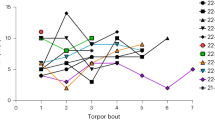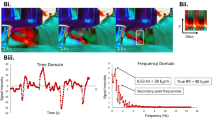Abstract
Among the growing list of novel tools with which to assess animal welfare is the use of thermal (infrared) imaging. The technology has already been utilized to identify emotional arousal in several nonhuman primate species, though most of these approaches have necessitated the use of relatively controlled settings. Here, we were interested to determine the feasibility of such techniques in a sanctuary setting in which chimpanzees were unrestrained and able to move freely around their enclosures. Furthermore, we sought to evaluate how such thermal images could be paired with corresponding long-term behavioral data and contribute to a multifactorial welfare monitoring system. Over a 6-month period, we simultaneously collected both behavioral and thermographic data on 29 chimpanzees living in four social groups. While we took a thermal image with every behavioral data point, we found that only a small proportion (6.38%) of the thermal images we captured were of sufficient quality to analyze. Most of these usable thermal images (55%) corresponded with a behavioral observation scored as “inactive,” and thus other, less frequent behaviors are not so well represented in our final data set. From our data set, we were able to determine that nasal temperatures were relatively lower when chimpanzees were categorized in active behaviors compared to inactive behaviors, providing some validity measures to our approach. While there are other potential applications for thermal imaging in the behavioral management of chimpanzees, managers should consider the practical limitations of developing long-term welfare monitoring programs that rely on thermographic data.





Similar content being viewed by others
Change history
25 September 2021
A Correction to this paper has been published: https://doi.org/10.1007/s10329-021-00950-6
References
Bakdash JZ, Marusich LR (2017) Repeated measures correlation. Front Psychol 8:456. https://doi.org/10.3389/fpsyg.2017.00456
Bates DM, Mächler M, Bolker BM, Walker SC (2015) Fitting linear mixed-effects models using lme4. J Stat Softw 67:1–48. https://doi.org/10.18637/jss.v067.i01
Broom DM, Johnson KG (2019) Stress and animal welfare: key issues in the biology of humans and other animals. Springer, Cham
Carlitz EHD, Kirschbaum C, Miller R, Rukundo J, van Schaik CP (2015) Effects of body region and time on hair cortisol concentrations in chimpanzees (Pan troglodytes). Gen Comp Endocrinol 223:9–15. https://doi.org/10.1016/j.ygcen.2015.09.022
Chotard H, Ioannou S, Davila-Ross M (2018) Infrared thermal imaging: positive and negative emotions modify the skin temperatures of monkey and ape faces. Am J Primatol 80(5):e22863. https://doi.org/10.1002/ajp.22863
Dezecache G, Wilke C, Richi N, Neumann C, Zuberbühler K (2017a) Skin temperature and reproductive condition in wild female chimpanzees. PeerJ 5:e4116. https://doi.org/10.7717/peerj.4116
Dezecache G, Zuberbühler K, Davila-Ross M, Dahl CD (2017b) Skin temperature changes in wild chimpanzees upon hearing vocalizations of conspecifics. Royal Soc Open Sci 4(1):160816. https://doi.org/10.1098/rsos.160816
Dobson AJ, Barnett A (2008) An introduction to generalized linear models. Chapman and Hall/CRC, Boca Raton
Ermatinger FA, Brügger RK, Burkart JM (2019) The use of infrared thermography to investigate emotions in common marmosets. Physiol Behav 211:112672. https://doi.org/10.1016/j.physbeh.2019.112672
Foster S, Ijichi C (2017) The association between infrared thermal imagery of core eye temperature, personality, age and housing in cats. Appl Anim Behav Sci 189:79–84. https://doi.org/10.1016/j.applanim.2017.01.004
Hansen BK, Fultz AL, Hopper LM, Ross SR (2018) An evaluation of video cameras for collecting observational data on sanctuary-housed chimpanzees (Pan troglodytes). Zoo Biol 37(3):156–161. https://doi.org/10.1002/zoo.21410
Hansen BK, Hopper LM, Fultz AL, Ross SR (2020) Understanding the behavior of sanctuary-housed chimpanzees during public programs. Anthrozoös 33(4):481–495. https://doi.org/10.1080/08927936.2020.1771055
Heintz MR, Fuller G, Allard S (2019) Exploratory investigation of infrared thermography for measuring gorilla emotional responses to interactions with familiar humans. Animals 9(9):604. https://doi.org/10.3390/ani9090604
Herborn KA, Jerem P, Nager RG, McKeegan DE, McCafferty DJ (2018) Surface temperature elevated by chronic and intermittent stress. Physiol Behav 191:47–55. https://doi.org/10.1016/j.physbeh.2018.04.004
Ioannou S, Gallese V, Merla A (2014) Thermal infrared imaging in psychophysiology: potentialities and limits. Psychophysiology 51(10):951–963. https://doi.org/10.1111/psyp.12243
Ioannou S, Chotard H, Davila-Ross M (2015) No strings attached: physiological monitoring of rhesus monkeys (Macaca mulatta) with thermal imaging. Front Behav Neurosci 9:160. https://doi.org/10.3389/fnbeh.2015.00160
Jumail A, Liew TS, Salgado-Lynn M, Fornace KM, Stark DJ (2021) A comparative evaluation of thermal camera and visual counting methods for primate census in a riparian forest at the lower Kinabatangan wildlife sanctuary (LKWS) Malaysian Borneo. Primates 62(1):143–151. https://doi.org/10.1007/s10329-020-00837-y
Kano F, Hirata S, Deschner T, Behringer V, Call J (2016) Nasal temperature drop in response to a playback of conspecific fights in chimpanzees: a thermo-imaging study. Physiol Behav 155:83–94. https://doi.org/10.1016/j.physbeh.2015.11.029
Kuraoka K, Nakamura K (2011) The use of nasal skin temperature measurements in studying emotions in macaque monkeys. Physiol Behav 102(3–4):347–355. https://doi.org/10.1016/j.physbeh.2010.11.029
McFarland R, Barrett L, Fuller A, Hetem RS, Porter WP, Young C, Henzi SP (2020) Infrared thermography cannot be used to approximate core body temperature in wild primates. Am J Primatol 82(12):e23204. https://doi.org/10.1002/ajp.23204
Melfi VA (2009) There are big gaps in our knowledge, and thus approach, to zoo animal welfare: a case for evidence-based zoo animal management. Zoo Biol 28(6):574–588. https://doi.org/10.1002/zoo.20288
Nääs IA, Garcia RG, Caldara FR (2020) Infrared thermal image for assessing animal health and welfare. J Anim Behav Biometeorol 2(3):66–72. https://doi.org/10.14269/2318-1265/jabb.v2n3p66-72
Nakayama K, Goto S, Kuraoka K, Nakamura K (2005) Decrease in nasal temperature of rhesus monkeys (Macaca mulatta) in negative emotional state. Physiol Behav 84(5):783–790. https://doi.org/10.1016/j.physbeh.2005.03.009
Negrey JD, Sandel AA, Langergraber KE (2020) Dominance rank and the presence of sexually receptive females predict feces-measured body temperature in male chimpanzees. Behav Ecol Sociobiol 74:5. https://doi.org/10.1007/s00265-019-2788-3
R Core Team (2020) R: a language and environment for statistical computing, Vienna. https://www.R-project.org/.
Rimm-Kaufman SE, Kagan J (1996) The psychological significance of changes in skin temperatures. Motiv Emot 20:63–78. https://doi.org/10.1007/BF02251007
Ross MR, Niemann T, Wark JD, Heintz MR, Horrigan A, Cronin KA, Shender MA, Gillespie K (2016) ZooMonitor (Version 1) [Mobile application software]. https://zoomonitor.org. Accessed 1 June 2020
Sato Y, Hirata S, Kano F (2019) Spontaneous attention and psycho-physiological responses to others’ injury in chimpanzees. Anim Cogn 22:807–823. https://doi.org/10.1007/s10071-019-01276-z
Wark JD, Cronin KA, Niemann T, Shender MA, Horrigan A, Kao A, Ross MR (2019) Monitoring the behavior and habitat use of animals to enhance welfare using the ZooMonitor app. Anim Behav Cogn 6(3):158–167. https://doi.org/10.26451/abc.06.03.01.2019
Wark JD, Wierzal NK, Cronin KA (2020) Mapping shade availability and use in zoo environments: a tool for evaluating thermal comfort. Animals 10(7):1189. https://doi.org/10.3390/ani10071189
Watters JV, Krebs BL, Eschmann CL (2021) Assessing animal welfare with behavior: onward with caution. J Zool Bot Gard 2(1):75–87. https://doi.org/10.3390/jzbg2010006
Wickham H (2016) ggplot2: elegant graphics for data analysis. Springer-Verlag, New York. ISBN 978-3-319-24277-4. https://ggplot2.tidyverse.org. Accessed 1 June 2020
Wolfensohn S, Shotton J, Bowley H, Davies S, Thompson S, Justice W (2018) Assessment of welfare in zoo animals: towards optimum quality of life. Animals 8(7):110. https://doi.org/10.3390/ani8070110
Acknowledgements
This study was funded by the Arcus Foundation. We thank the staff at Chimp Haven for supporting our research efforts and for providing the best possible care to the chimpanzees there. The views and opinions expressed in this publication, presentation or abstract represent the authors’ views alone, and do not express or imply the views, endorsement, or financial support of the United States Federal government or any of its agencies, including the National Institutes of Health, unless otherwise stated by an authorized representative thereof.
Author information
Authors and Affiliations
Corresponding author
Ethics declarations
Conflict of interest
Stephen R. Ross is an unpaid editor for Primates and is on the board of directors of Chimp Haven and receives no compensation as member of the board of directors.
Ethical approval
This research was approved by the Lincoln Park Zoo Research Committee, the Chimp Haven Sanctuary Chimpanzee Care Committee (SCCC), and by the National Institutes of Health (NIH). Research adhered to the American Society of Primatologists’ Principles for the Ethical Treatment of Non-Human Primates.
Additional information
Publisher's Note
Springer Nature remains neutral with regard to jurisdictional claims in published maps and institutional affiliations.
Supplementary Information
Below is the link to the electronic supplementary material.
About this article
Cite this article
Ross, S.R., Lake, B.R., Fultz, A. et al. An evaluation of thermal imaging as a welfare monitoring tool for captive chimpanzees. Primates 62, 919–927 (2021). https://doi.org/10.1007/s10329-021-00943-5
Received:
Accepted:
Published:
Issue Date:
DOI: https://doi.org/10.1007/s10329-021-00943-5




